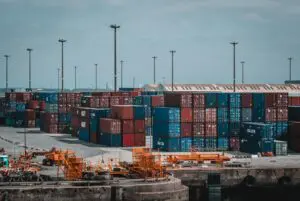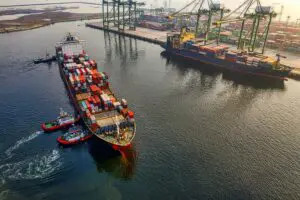Understanding the Risk
In this presentation, Costmine’s Senior Mining Engineer, Ali Vossoughian, offers a candid look at the challenges of modeling mining projects with precision. He discusses the risks of relying on oversimplified assumptions, the importance of incorporating engineering detail into economic models, and the consequences of overlooking uncertainty in project planning.
Mining is a high-stakes industry, where success is anything but guaranteed. We’ll explore how data and engineering improve cost estimation and planning in mining operations.
Out of every 5,000 mineral occurrences, only 100 show promise. From there, just 10 advance to feasibility studies, and ultimately, only 2 become operational mines. That might seem reasonable, but the real challenge emerges when 2 out of every 5 operational mines fail to turn a profit. Imagine investing millions of dollars into a project, launching operations, and after just a few years, realizing the mine isn’t profitable. That’s a serious issue. So how do we solve it?
The key to avoiding costly mistakes is understanding three critical components: data, engineering, and finance. In this presentation, we’ll focus on data and engineering while acknowledging that finance remains a crucial factor in overall project success.
Accurate cost estimation starts with robust geological data. Mining companies need to understand the estimated total of mine-able resources, the pre-production stripping requirement, and the length of the pre-production period. Additional operational data is just as critical, including labor costs, wage variations by region, equipment costs, operating expenses for machinery like shovels, and supply costs for consumables like lubricants and explosives. Without this information, cost estimation becomes speculative rather than strategic.
Beyond data, engineering decisions play a crucial role in determining mining costs. The type and size of equipment used directly impact operating expenses, and key decisions must be made early on, such as whether to use an electric shovel or a hydraulic shovel. Infrastructure needs must also be considered, how many buildings will be required, including offices, warehouses, and maintenance shops? What will the processing plant cost? And what about mine reclamation? These engineering factors shape the overall financial and operational feasibility of a mining project.
Finance ties all of these factors together. The total cost of a mining operation is influenced by operating costs, capital investments, taxation, royalties, and commodity price fluctuations. Without a solid financial framework that accounts for variability in costs and production, even well-planned mines can fail to turn a profit.
Costmine Intelligence provides extensive data to help answer these questions. This includes over 3,000 pieces of Mine and Mill Equipment cost data, wage and salary data from mines across the U.S. and Canada, and supply price data from multiple countries. These insights form the foundation of reliable cost estimation.
Costmine’s Sherpa Software has collected engineering data from mines worldwide since the 1980s. With decades of historical and real-world cost analysis, Sherpa provides reliable insights that allow mining professionals to anticipate challenges before they arise and refine cost models with greater accuracy.
One of the most overlooked factors in mine planning is the butterfly effect, the idea that small variables can have massive cost implications over time. Even a slight change in material properties can significantly impact operational costs.
A prime example of this is compressive strength, a rock’s resistance to crushing. Compressive strength influences multiple aspects of mine planning, including drill and blast design, equipment wear rates, and fuel consumption. Higher compressive strength means greater resistance to breaking, requiring more energy, increased drilling, and higher overall operational costs. Ignoring this factor during early planning can lead to major cost overruns.
To illustrate this, let’s look at a case study. In our simulated mine, we analyzed a deposit of 168 million tonnes, with a pre-production stripping requirement of 3.5 million tonnes, a two-year pre-production period, and an ore production rate of 40,000 tonnes per day. The mine was developed in four phases with increasing strip ratios. The key variable in this simulation was compressive strength, which ranged from 80 kilopascals to 240 kilopascals. Anything below 80 kilopascals is generally unmine-able, and higher compressive strength dramatically increases costs.
When compressive strength increases, the number of primers and caps needed for blasting rises by over 50 percent. ANFO consumption more than doubles, increasing overall explosive costs. Drill bit usage jumps from 1.3 units per day to over 3.7, significantly affecting maintenance costs. Fuel consumption spikes, with harder rock requiring more drilling and leading to an additional 10,000 gallons of fuel per day.
The increased fuel demand leads to higher operating costs and greater environmental considerations. More drilling means more wear on equipment, requiring additional maintenance and replacement of key components.
Labor costs increase as more mechanics, drillers, and blasters are needed, raising costs by up to 20 percent. More personnel are required to operate additional equipment and perform maintenance on machinery that experiences greater wear due to harder rock conditions.
The overall operating cost per metric ton increases from $28 to over $33, making profitability a challenge. The cumulative impact of compressive strength on blasting, fuel, drilling, and labor creates a significant financial strain on mining operations.
Compressive strength alone can impact multiple cost factors. Drill and blast supply costs can increase by up to 300 percent.
Labor costs can rise by up to 20 percent. Fuel consumption can increase by 15 percent. Equipment capital costs can be affected by up to 10 percent. When looking at the bigger picture, total operating costs can rise by 20 percent, while total capital costs can increase by 10 percent. And that’s just one variable.
A real-world example of cost estimation challenges comes from the Los Azules project. Los Azules is a surface mine with total mine-able resources of 1.18 billion metric tonnes, a daily ore production of 120,000 tonnes, and a stripping ratio of 1.15 to 1. The pre-production period was two years, with pre-production stripping at over 101 million metric tonnes. The processing method involved conventional flotation, with copper recovery estimated at 89 to 90 percent.
At Los Azules, we faced a major challenge: limited data availability. We had only basic geological and production estimates, lacking detailed engineering factors like compressive strength.
Instead of spending millions on an early-stage development study, we used Sherpa Surface to simulate costs. Our estimates came within 7 percent accuracy of the full development study. So what is the key difference? We spent only 20 hours on the study compared to a million-dollar feasibility analysis. This demonstrates the power of data-driven mine planning using Costmine’s tools.
By leveraging data and engineering insights early in the mine planning process, mining companies can avoid costly surprises and increase the likelihood of profitability.





















